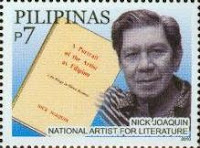The Menara KL and other Observation Towers on Stamps

I have never visited the Tower of Juche , nor am I planning to visit the place. I also have no desire to cross the demilitarized zone between South Korea and North Korea, although I have contemplated the thought when I was there twice. But this tower interest me, because North Korea issued a stamp in the nineties with its flag and national anthem score featured on it. Various attempts to avail of this stamp was an exercise in futility. Until now, I still don't have the stamp, so I you have it, please email me or give me a call. I have however recently visited four observation Towers- the Coit Tower in San Francisco, California, the Menara Tower in Kuala Lumpur, the Macau Tower in China and the N Seoul Tower in South Korea. The Coit Tower is located in Pioneer Hill in San Francisco, California and built in 1933 at the bequest of socialite Lilly Hitchcock Coit. The art deco tower, made of unpainted reinforced concrete, was designed by architects Arthur Brown, Jr. and Henry ...








